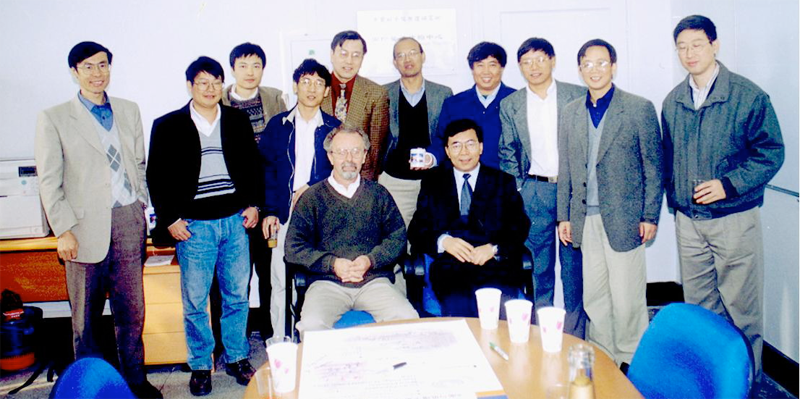


The picture shows Professor Plummer seated with Dr. Bai Chunli, who would become the President of CAS in 2011. Standing is a distinguished set of Chinese scholars; five of them would subsequently be elected to CAS, and four would serve as presidents of top universities, one as vice president. Three have been attracted back to China through the "Thousand Talents Program" and one received the 2016 "Award of Future Science". Especially important to my involvement are long-time friend and colleague professor Zhang Zhenyu (3rd from right), then at Oak Ridge National Laboratory, now at the University of Science and Technology of China (USTC) and professor Wang Enge (5th from right), then director of IOP and founder of ICQS.(Photo by CAS)
By EARL WARD PLUMMER
My collaboration with Chinese scholars began very early in my career. In 1975 I hosted my first Chinese graduate student, who has recently been elected to the National Academy of Sciences (NAS). During subsequent years more than 40 percent of my Ph.D. students and postdoctoral fellows have been of Asian ancestry. Half of these collaborators have returned to Asia, primarily China, but also to Korea, Japan, and Indonesia. This interchange of scientists coming to the US and returning to China has created life-long partnerships especially with the Institute of Physics, Chinese Academy of Sciences (IOP, CAS) in Beijing. My connection with and fostering of scientific leaders in China has assured a constant stream of very talented scholars working in my laboratory and allowing me and my students to benefit from the expertise at IOP.
Formally, my collaboration with scientists associated with CAS began in October of 2000, with the opening of the International Center for Quantum Structure (ICQS) at IOP in Beijing. The picture shows me seated with Dr. Bai Chunli, who would become the President of CAS in 2011. Standing is a distinguished set of Chinese scholars; five of them would subsequently be elected to the CAS, and four would serve as presidents of top universities, one as vice president. Three have been attracted back to China through the “Thousand Talents Program” and one received the 2016 “Award of Future Science.” Especially important to my involvement are long-time friend and colleague professor Zhang Zhenyu (3rd from right), then at Oak Ridge National Laboratory, now at the University of Science and Technology of China (USTC) and professor Wang Enge (5th from right), then director of IOP and founder of ICQS. ICQS established an international advisory team consisting of world-class scientists in condensed matter physics. Of the four members from the US, three were subsequently elected to the NAS, one received the Oliver Buckley Prize from the APS, and one was elected to the NAE.
ICQS was such a success that the idea was cloned by Peking University (International Center for Quantum Material), and USTC (International Center for Quantum Design). The collaboration between IOP and LSU has grown through the funding of two joint programs, one funded by IOP, CAS and the other by the Key External Cooperation Program of the Bureau of International Cooperation, CAS. The collaborations have been expanded to include other universities in the US.
Finally, I am indebted to Professor Guo Jiandong for nominating me for this award and for his insightful leadership in our collaborative programs. I look forward to our future collaborations.
Source: CAS